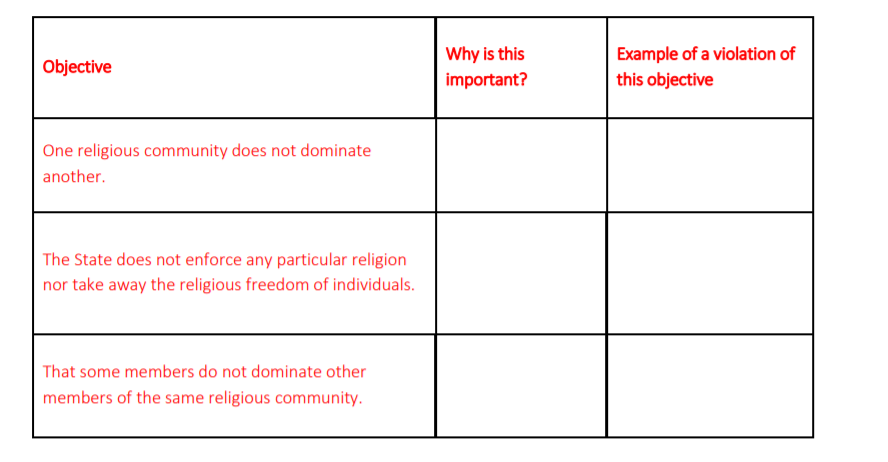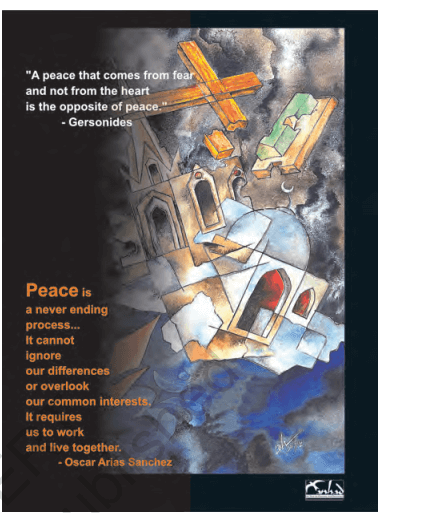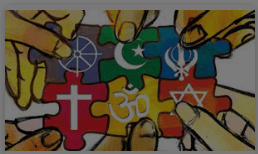Civics - Class 8
Social and Political Life - III
Chapter 2: Understanding Secularism
Intext Questions
Question 1: Re-read the introduction to this chapter. Why do you think retaliation is not the proper response to this problem? What would happen if different groups followed this path?
Answer :In Hitler’s Germany, Jews were persecuted and several millions were killed. Now, the Jewish State of Israel treats its own Muslim and Christian minorities quite badly. It is a form of retaliation which is not the proper response to this problem because it creates further tension and chaos in the country. It also hinders the social and economic development as the people are always engaged in minor problems. The minorities are ignored and, thus, feel humiliated.
If different groups follow the same path, there will be a state of turmoil throughout the world. It will adversely affect the international relations. There will be a lack of cooperation and coordination among the different communities.
Question 2: Discuss in class : Can there be different views within the same religion?
Answer :Yes, there can be different views in the same religion. For example, in Hinduism some people like to worship Lord Shiva while some other like to worship Lord Vishnu. The Muslim community is also divided into Shias and Sunnis due to different beliefs.Question 3: In the above storyboard, discuss the answer given by the teacher.

Answer :
In the above storyboard the students of government school asked their teacher to celebrate a big religious festival in the school premises. But teacher explained that government schools do not celebrate any religious festival because they cannot give importance to any one religion. In other words, teacher is trying to explain that celebration of religious festival in government organisations means violating the aspect of secularism which is mentioned in our Constitution.
Question 4: Government schools often have students from different religious backgrounds. Re-read the three objectives of a secular State and write two sentences on why it is important that government schools do not promote any one religion?
Answer :Government schools should not promote any one religion because the students of a particular religion (minority) will feel inferior. They will be ill-treated or even insulted by the majority religious group from time to time. The minority students will not be able to perform their best in the school.
Question 5: Can you think of a recent incident, from any part of India, in which the secular ideals of the Constitution were violated and persons were persecuted and killed because of their religious backgrounds?
Answer :In Jammu and Kashmir, the non- Muslim communities are persecuted, killed, and threatened by the Muslim community. Hindus are not allowed to practice their festivals and culture. It is just a violation of secular ideals of the Constitution.
Excercises
Question 1: List the different types of religious practice that you find in your neighbourhood. This could be different forms of prayer, worship of different gods, sacred sites, different kinds of religious music and singing, etc. Does this indicate freedom of religious practice?
Answer :(1) Different types of religious practice that I found in my neighbourhood are :
- Hindus
- Muslims
- Sikhs
(i) Hindus go to the temple to worship God. They celebrate various festivals like Holi, Diwali, etc. They hymn Bhajans, Ramayan and Gita.
(ii) Muslims go to mosques to worship God (Allah). They celebrate Id. They recite Quran. Elders go for their pilgrimage at Mecca.
(iii) Sikhs celebrate Guru Nanak Birthday and Guru Gobind Singh Jayanti. They go to Gurudwara to worship their God. Their holy book is Guru Granth Sahib.
(2) Yes, it indicates freedom of religious practice.
Question 2: Will the government intervene if some religious group says that their religion allows them to practise infanticide? Give reasons for your answer.
Answer :The government in any democratic nation would intervene if some religious group says that their religion allows them to practice infanticide because this tradition goes against the Fundamental Right to Life. It involves the killing of an innocent child so it is unacceptable. The government, in this case, interferes by coercion.
However, sometimes, the government may also intervene via support. For example, Sikhs in Delhi are excused from wearing helmets on two-wheelers because their religion demands them to wear a turban-a sacred tradition for them.
Question 3: Complete the following table:

Answer :
(a) This is important to protect the Fundamental Right to Freedom of Religion.
Example of violation: the demolition of the Babri Masjid in Ayodhya on 6th December, 1992 by Hindu nationalists.
(b) This is important to uphold the ideals of a democratic nation which allows its citizens freedom to choose whichever religion they wish to follow.
Example: France, in February 2004, banned headscarves and turbans in public places, thereby hurting the sentiments of Muslim and Sikh minorities.
(c) This is necessary to uphold individual freedom in the light of pressure from a group or religious community that one belongs to.
Example: the Christian community is divided into Protestants and Catholics; Irish Catholics are looked down upon and troubled by the officials of the Church of England who are pre-dominantly Protestants.
Question 4: Look up the annual calendar of holidays of your school. How many of them pertain to different religions? What does this indicate?
Answer :Many holidays on a school's annual calendar pertain to different religions. This indicates that India is a secular country where religious freedom is granted to its citizens and all religions are equally respected.
Question 5: Find out some examples of different views within the same religion.
Answer :Among Muslims, many people believe in ‘Purdah system’, whereas many do not approve of it & see it as interference in the freedom of women.
Question 6: The Indian State both keeps away from religion as well as intervenes in religion. This idea can be quite confusing. Discuss this once again in class using examples from the chapter as well as those that you might have come up with.
Answer :- The Indian State distances itself from the religion and it is not ruled by a religious group & nor does it support any one religion.
- Equal respect is given to all the religions. In order to prevent domination by one particular community, the state may interfere in the religion.
- State may interfere in the religion to ensure that all the religions are treated equally.
- Sometimes, the State may have to intervene in the religion based on ‘personal laws’ of the communities to ensure that laws relating to equal inheritance are protected.
Question 7: This poster alongside highlights the need for 'Peace'. It says, “Peace is a never ending process... It cannot ignore our differences or overlook our common interests.” Write in your own words what you think the above sentences are trying to convey? How does it relate to the need for religious tolerance? This chapter had three drawings on religious tolerance made by students of your age. Design your own poster on religious tolerance for your peers.

Answer :
‘Peace is a never-ending process. It cannot ignore our differences or overlook our common interests.’
The above sentences say that for all the communities to stay together, it is very important that each religious community should respect the other, their interests & their religious practices. We should not feel bound by any law that we need to respect the other religion, whereas, we should work towards decreasing the differences amongst religious communities & work towards bringing peace in the society as a civilized society. Only then, we will be able to enjoy the co-existence of different religious in the society.
Question :This chapter had three drawings on religious tolerance made by students of your age. Design your own poster on religious tolerance for your peers.
Answer :